Chocolate lovers round the world know some of the best chocolate in Europe comes from chocolate cities like Brussels and Perguia. But did you know that it was the modest Basque city of Bayonne in the south west of France that was pivotal in chocolate’s spread across Europe? Often overshadowed by its glitzier neighbor, Biarritz, and as a stopover on the way to Basque Country, there’s reason to spend some time in Bayonne. It’s here that you can eat and drink your weight in chocolate as you wander the Bayonne Chocolate Street and discover Europe’s Capital of Cocoa, where chocolatiers still serve chocolate the very way it was made in the 17th century.
The History of Chocolate in Europe
It was the Spanish that discovered drinking chocolate in Mexico on their expeditions. Christopher Columbus was the first to bring cocoa beans back. He presented them to King Ferdinand and Queen Isabella, but they found the beans to be strange and weren’t interested in them.
Spanish conquistador Hernán Cortés first tasted drinking chocolate at the Aztec Court in Montezuma, Mexico in 1519. Cortés didn’t actually really enjoy drinking the chocolate, but he recognized the commercial value of cocoa beans and brought them back to Spain in 1528. Armed with not only the beans, but a recipe and the necessary equipment to make “hot chocolate”, Ferdinand and Isabella finally took notice.
It wasn’t loved at first, but once chocolate caught on in Spain, it really caught on. The Spanish were drinking it for both health and energy. It was first sold at pharmacies for medicinal purposes, and it was considered so necessary that it was even allowed to continue drinking it during Lent. Eventually Spanish cooks began experimenting with cocoa more, and started adding sugar to sweeten it.
The Spanish fiercely kept their chocolate a secret from the rest of Europe for many years. A Spanish merchant ship filled with cocoa beans was even attacked by English pirates in 1579, but the pirates had about as much interest in the beans as Ferdinand and Isabella first did. They dismissed the beans as dried up sheep poop and burned the ship out of anger.
Chocolate’s Arrival in France
Built on the confluence of the Adour and Nive rivers, Bayonne is one of the first places in Europe to make chocolate as we know it today. It was on the right bank of the Adour River, known as the Saint-Esprit district, that the Jews from Spain and Portugal fleeing the Spanish Inquisition came to settle. They brought cocoa beans with them in the 17th century, and developed thriving businesses making chocolate in Bayonne.
It wasn’t long before the Basque people picked up the craft of chocolate making. By 1725 there was a municipal decree prohibiting Bayonne’s Jewish community from making and selling chocolate. A Parisian physician visiting Bayonne heard of the medicinal properties of the chocolate, and before long was even prescribing it as a sort of feel good “drug” for the royal family.
Too say chocolate had become chic is an understatement. Drinking it became a way of life.
Soon chocolate shops were popping up all along the Rue Port Neuf in Grand Bayonne, the heart of city. By 1856 there were more than 30 chocolate factories in Bayonne. Chocolate making was one of Bayonne’s main industries; ship building was the one industry more profitable in Bayonne. The number of people employed by chocolate-making in Bayonne was greater than the chocolate-makers in the whole of Switzerland.
Many of Bayonne’s oldest chocolate makers remain on the “Bayonne Chocolate Street” to this day. As trying the chocolate is one of the best things to do in Bayonne, Rue de Port Neuf is where we spent the majority of our time in Bayonne and discovered Europe’s history of chocolate as we moved from one historic chocolatier to the next.
A Do-it-Yourself Bayonne Chocolate Tour
If there’s ever a city that should have an official chocolate tour, it’s Bayonne. But (at least for now) there isn’t one, and so to discover cocoa you need to embark on your own do-it-yourself chocolate tour of Bayonne. Chocolate is always a good idea, but it’s also worth planning a trip around Bayonne’s Les Journées du Chocolat (Chocolate Days), which take place around the Feast of the Ascension in May/June each year. For two days, the chocolatiers offer tastings in front of their shops, special workshops and events all to celebrate Bayonne’s chocolate heritage.
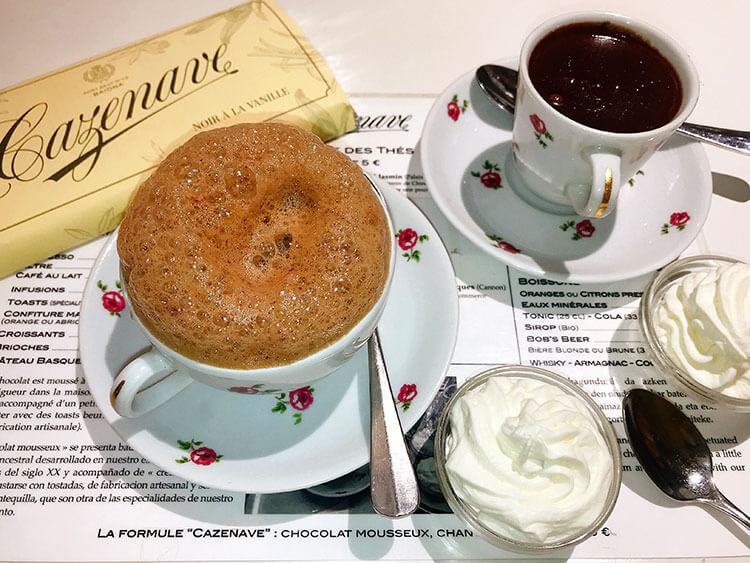
The best place to start is at Chocolat Cazenave, where chocolate has been made since 1854. It’s here that you can taste chocolate as it was originally consumed when it arrived in Europe, which was much like the Mayans drank it. Before Joseph Fry made the first bar of chocolate in Bristol, England in 1847, chocolate was consumed just as it still is at Cazenave today.
The chocolate merchants would roast the cocoa beans in little ovens, then after cooling the beans in canvas bags they would pound them in to a paste on a heated stone balanced on top of a sort of tripod. The pounding could took up to an hour in order to coax the beans into a paste suitable for whipping up a proper pot of hot chocolate. With the development of the chocolate bar, things became a little easier.
Drinking chocolate was made by melting chocolate paste in milk and frothing it. Cazenave actually still uses this method today, buying their cocoa beans in raw form and roasting them in their very own laboratory. Then they crush them in to chocolate paste for their hot chocolate.
With both a Cazenave house specialty chocolate and a much thicker pudding-like cup of chocolate sitting before us, we’re stunned to discover it’s the thicker chocolate that is made with water. The pretty porcelain tea cup capped with bubbly brown chocolate foam is the one made with milk in the traditional method.
My mind is effectively blown. I really thought that the milk would make the melted chocolate thicker and richer, but it’s the ratio of chocolate melted in to each of the drinking chocolate concoctions that determines the thickness. The thick pudding-like chocolate that slowly drips from the spoon like sticky caramel is a bit too rich for my liking.
Over the cups of hot chocolate in the tea house that feels like we’ve stepped back to the 1800s, we also learn about the invention of the cocoa press. A Dutchman named Coenraad Johannes van Houten invented it in 1828 and revolutionized chocolate making. Without the cocoa press, we wouldn’t have any of the chocolate sheets, milk chocolate or chocolate truffles we were about to taste as we moved along the Chocolate Street.
Next, we stop in at L’Atelier du Chocolat. It’s one of the French chocolate brands we already know from their two locations in Bordeaux, and there are more than 30 shops throughout France. But what’s special about L’Atelier du Chocolat on Rue Port Neuf is that it’s part workshop, part museum and a shop. In the morning time you can see the chocolate makers making the chocolate daily through the glass walls separating the shop and workshop. There’s also a small collection of machines used for chocolate making and unique to Bayonne that date back for over a century.
L’Atelier du Chocolat is famous for their “chocolate bouquets,” which are made with the sheets of pure cocoa butter chocolate that they concoct daily. We’re offered a taste of the dark chocolate sheet with piment d’Espelette from the Basque country and love the spiciness of the chili with the chocolate. We can’t leave without some of the Espelette dark chocolate and a little bouquet of it is soon tucked away in my bag; it will be for snacking on while on the train back to Bordeaux later.
You can also book a chocolate factory visit of L’Atelier du Chocolat through the Bayonne tourism office. This tour is at the much larger factory on the outskirts of Bayonne. There’s a guided tour of the machinery in their small museum, a short video about the production of cocoa and the tour ends with a tasting of different chocolates from around the world. Kids are also invited to paint their very own chocolate fish to take home.
We pass by Maison Pariès since we’ve just been there on our do-it-yourself food tour of Saint-Jean-de-Luz, but it you haven’t visited the Basque fishing town definitely stop in. They’ve been making chocolate since opening their doors in 1895 and it’s still owned and run by the same family. Their milk chocolate sardines molded in the shape of the fish is the only way I want to consume any sort of sardine. Maison Pariès also makes chocolates in the same shape of La Rhune, the mountain that’s the symbol of Pays Basque. You can definitely find some souvenir chocolate from Europe to bring home for friends and family, and they’ll swoon over the packaging alone.
Finally, stop in Daranatz. The chocolate house has specialized as a grand cru of dark chocolate since opening their doors in 1890. Their grand cru chocolate is made from cocoa beans sourced from only the world’s best chocolate terroirs and are flavored with additions like the IGP hazelnut from Piedmont, Italy. Also, who can really leave Bayonne without seeing a bust of Louis XIV sculpted from chocolate?
Where to Eat in Bayonne
After a sugar and caffeine rush from all of the chocolate, a proper meal is in order. Head to Chez Martin, a charming “bistronomique” tucked away in the center of Bayonne.
Bistronomique is a newer word here in France. It’s the kind of restaurant with the laid back casualness of a bistro, but with the high quality of food of a gastronomic restaurant. There’s just a handful of tables at Chez Martin and it’s the kind of place the locals all know about and tourists rarely just stumble upon.
It’s run by chef/owner Lionel Elissaldde, who has trained his chef skills around the world from the United States to London, before returning to his roots in Pays Basque. His cuisine is seasonal and innovative, yet pays homage to Basque cuisine.
No matter which plates you try, also try a Basque cider. Like chocolate, you might not think of France for ciders but apples are grown in the Pays Basque. Historically almost all Basque houses had an apple orchard and ciders have been produced in this region since 1291!
Chez Martin, 29 Rue d’Espagne.
Know Before You Go
Our trip to Bayonne was in partnership with Visit Bayonne and Région Nouvelle Aquitaine in order to bring you this story. However, Luxe Adventure Traveler maintains full editorial control of the content published on this site. As always, all thoughts, opinions, and enthusiasm for travel are entirely our own. This article contains affiliate links. When you book on Booking.com or Oui SNCF through our affiliate sites, we earn a small commission at no additional cost to you.

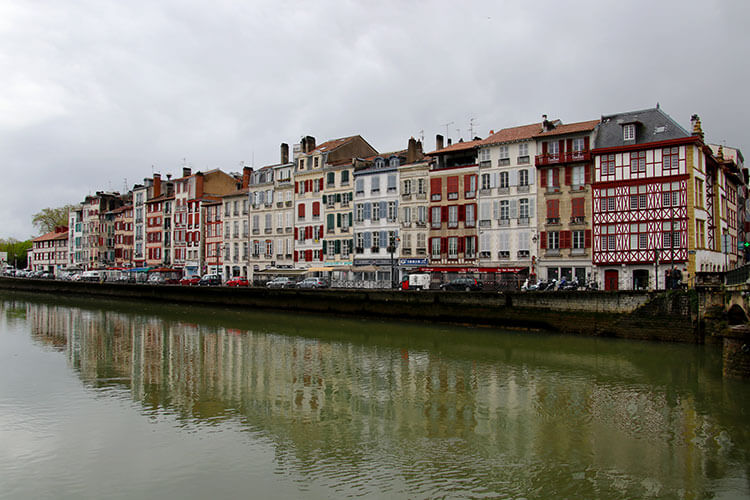
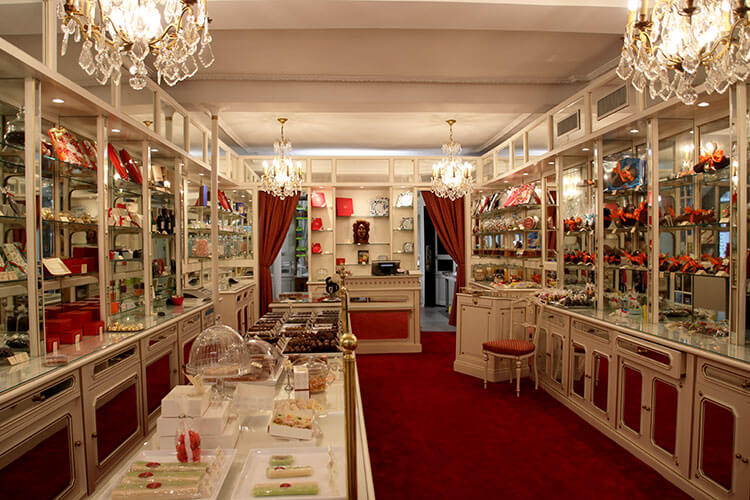


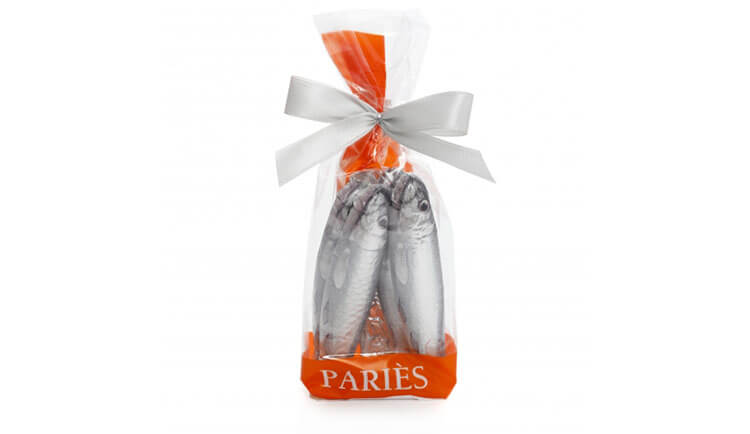
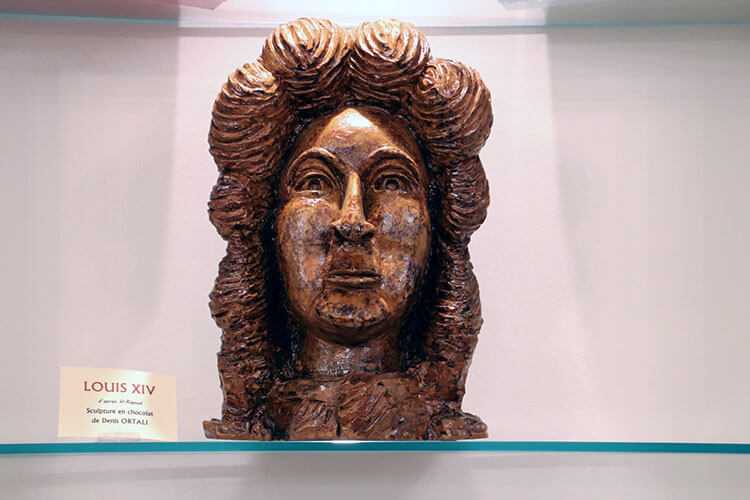
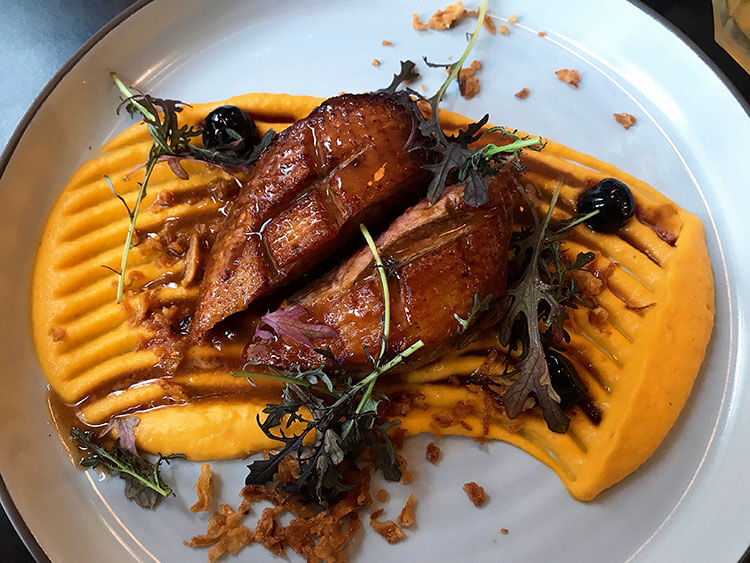

Danik says
I love Bayonne and the chocolate produce there but I never seen the head statue of Louis XIV made out of chocolate. I wonder if he is very yummy? 😛
Jennifer Dombrowski says
I’m sure that Louis XIV’s chocolate bust is delicious, since all the other chocolate was!
Carol Colborn says
This is so interesting to know. You see, my daughter-in-law is Basque. We wanted to visit her homeland but shortened our European trip to 4 weeks instead of 7. This Chocolate Street we would love to visit. And this thick chocolate pudding is so good for dipping churros!
Jennifer Dombrowski says
Is your daughter-in-law French Basque? What’s super interesting about the Basque country is that there are seven provinces total: four that lie in Spain and three that lie in France. The French Basque blend bits of their Spanish and French heritage. But we didn’t see any churros in Bayonne.
Linda says
Any blog post about chocolate will draw me in. I certainly did not know that Bayonne was critical in chocolate spreading across Europe. It would be so tempting to eat my weight in chocolate on the Chocolate Street. Fascinating that chocolate was first sold in pharmacies as a medicinal product. So glad the Spanish developed a like for chocolate and that it ultimately spread. We will definitely have to put Bayonne on our plans for our next visit to Spain. We would definitely want to try the drinking chocolate. The darker the better! Thanks for the suggestions on places to try.
Kavita Favelle says
I’m not sure it’s true any more than great chocolate comes from Belgium, it\’s one of those great marketing myths of Europe these days even if it was true at some stage in the past. Great to learn that Bayonne is a centre of excellence for chocolate and that it played such a role in chocolate’s European story. I’d love to take your DIY Bayonne Chocolate Tour, lovely idea!
Wendy says
Honestly, I never heard of Basque city of Bayonne let alone its influence on chocolate. I did not know this history of chocolate – interesting! Amazing 20 chocolate factories in Bayonne alone. That think caramel-consistency chocolate is the one I’d like to try. If I get to Bayonne, I will go to Rue Port Neuf to check out the chocolate.
Fiona Maclean says
I haven’t been to the French Basque for a while – Bayonne sounds fascinating and I’d love to visit – I really do have a fascination with chocolate and how it pervaded Europe.
Carol Perehudoff says
Fascinating dive into chocolate. I’ve always thought of Switzerland as the chocolate capital and now I need to really rethink things. I love that it was a ‘feel good drug for the royal family. Now it’s a feel good drug for the entire world! I actually like chocolate without much sugar so I would have liked it way back when.
Sandy N Vyjay says
The history of chocolate always makes for fascinating reading. I was not aware of the important role of Bayonnne in the history of Chocolate. It would indeed be a literal feast to visit Bayonne and take a walk down Bayonne Chocolate Stree. The bust of Louis XIV sculpted from chocolate at Daranatz had my attention riveted.
Claire says
OMG how did I not know that Bayonne is Europe’s Capital of Cocoa?? I had no idea! The history of the chocolate beans coming to Spain and France s fascinating. And now I know, I need to arrange a trip there asap, I adore all things chocolatey and it all looks yummy 🙂
Hannah says
I can’t believe I didn’t know this about Bayonne! I feel like I’ve been going all the way to Switzerland when I could’ve just popped down to Bayonne for a chocolate experience! I think I might quite like the thick gloopy hot chocolate made from water – sounds like a decadent treat!